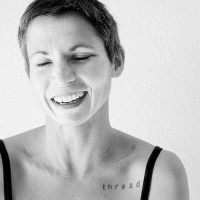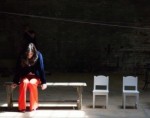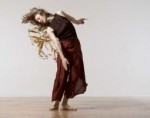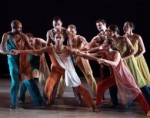
Photo: Jacob Bucko
A Love Note to RDA (Regional Dance America)
by Kirsten Kaschock
I went to my Central Pennsylvania middle school often with my hair plastered into a bun. I wasn’t good at getting the fine wisps to stay in place on my own, and I had little time between school and dance to fuss. All-day Aqua Net and my mother’s skill with a brush came to my rescue each morning (and made me an object of preteen ridicule most days). Between the ages of 11 and 18, I spent between 20 and 30 hours each week at the dance studio. Few of my classmates went to the studio where I studied, and only one graduate of that studio had at that time gone on to a professional career. Although I loved dancing, I wasn’t always clear exactly what I was sacrificing my social life and study time for.
When I was in the ninth grade, my studio joined
Regional Dance America. I first attended the annual festival at Smith College in Northampton, Massachusetts. There I was exposed to the kind of idyllic campus that characterizes many long-established liberal arts schools; it was also my first experience with an extended community of dancers whose training allowed them—immediately upon graduation from high school—to pursue careers in dance.
In and around Philadelphia and New York City, dance students may be exposed to a wide variety of companies and training practices. In my hometown, there were fewer options. There was “good” training and then there was the type of dancing school my fellow bun-heads and I insensitively nicknamed “Dixie’s Dancing Darlings,” studios with a more recreational approach to movement. Many of the women who have founded the schools that participate nationally in RDA began them because their own communities lacked more rigorous ballet and modern training. As in any kind of education, mindful practice comes from mindful teachers, teachers who—no matter what their own background—make it a priority to continue educating themselves for the benefit of their students.
This commitment to continual growth is at the heart of Regional Dance America (from 1963 to 1987 called NARB—the National Association of Regional Ballet). Local school companies, often from small towns far from metropolitan performance venues, bring their students together once a year for a festival that exposes them to each other, to teachers and techniques outside their regular practice, to seminars on nutrition and injury prevention and university options. Numerous professional companies (including Boston Ballet and Philadelphia’s own Philadanco) had their beginnings in the NARB/RDA system.
This year, the three-day RDA/Northeast festival is being held on the University of the Arts campus in Philadelphia from May 21 to 23. During the day, 300-plus students from 11 companies will attend classes, rehearsals, seminars, and auditions for summer scholarship opportunities. Each night, the student companies will perform pieces by in-house, guest, and emerging choreographers—on Thursday at the
Arts Bank and Friday and Saturday in the Perelman Theater at the
Kimmel Center. During the months prior to the late-spring festival, an adjudicator travels to each school to give feedback on classes and pieces and to curate the three evening programs. This year that role has been performed by Jeffrey Gribler, former principal dancer and ballet master of the Pennsylvania Ballet, whose early training within an RDA company and six stints as an adjudicator have made him a vocal advocate for the association’s efficacy.
Joy Capponi, the director of the festival’s host company, Philadelphia Dance Theatre (where two of my own sons dance), has assembled a group of estimable teachers for this gathering that includes Wes Chapman, Stephanie Tooman, Wayne St. David (of UArts), Lauren Anderson, Gary Jeter II, and Kathryn Morgan. Joan Myers Brown, founder of Philadanco, will be honored as a special guest.
During high school I attended several festivals as a dancer, and several afterwards as a choreographer. (Full disclosure: a piece of mine from 2005 is being restaged in this year’s festival). When I was 20, I spent two weeks in California on a scholarship from RDA to attend what is now called the
National Choreographers Initiative with the late Salvatore Aiello: that conference and the choreographers I met and worked with there changed my conception of what dance composition could be and do.
My home studio has gone on to send dancers to New York City Ballet, Miami Ballet, and Cedar Lake Dance Company, among others. My own sister and brothers graduated from our small pre-professional company (now called Pennsylvania Regional Ballet in Enola, PA) to dance for the Joffrey Ballet, Hubbard Street Dance Company, the David Parsons Company, and Scott/Powell Performance in Seattle. If I sound indebted to the opportunities presented by this loose conglomeration of teachers, directors, and companies, it is because for over two decades I have seen them transform the dreams of young dancers into concrete and achievable goals. Whether the student attendees enter the professional dance world or not, these few spring days—like all meaningful conferences and festivals—show them that their work can reach beyond their small home towns, that others share their dedication and passion, and that their art is bigger than they imagined.
By Kirsten Kaschock
May 17, 2015











